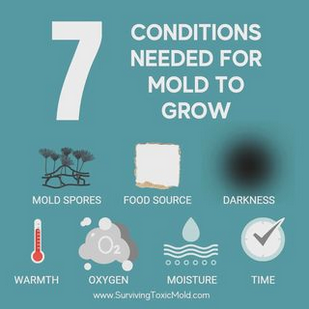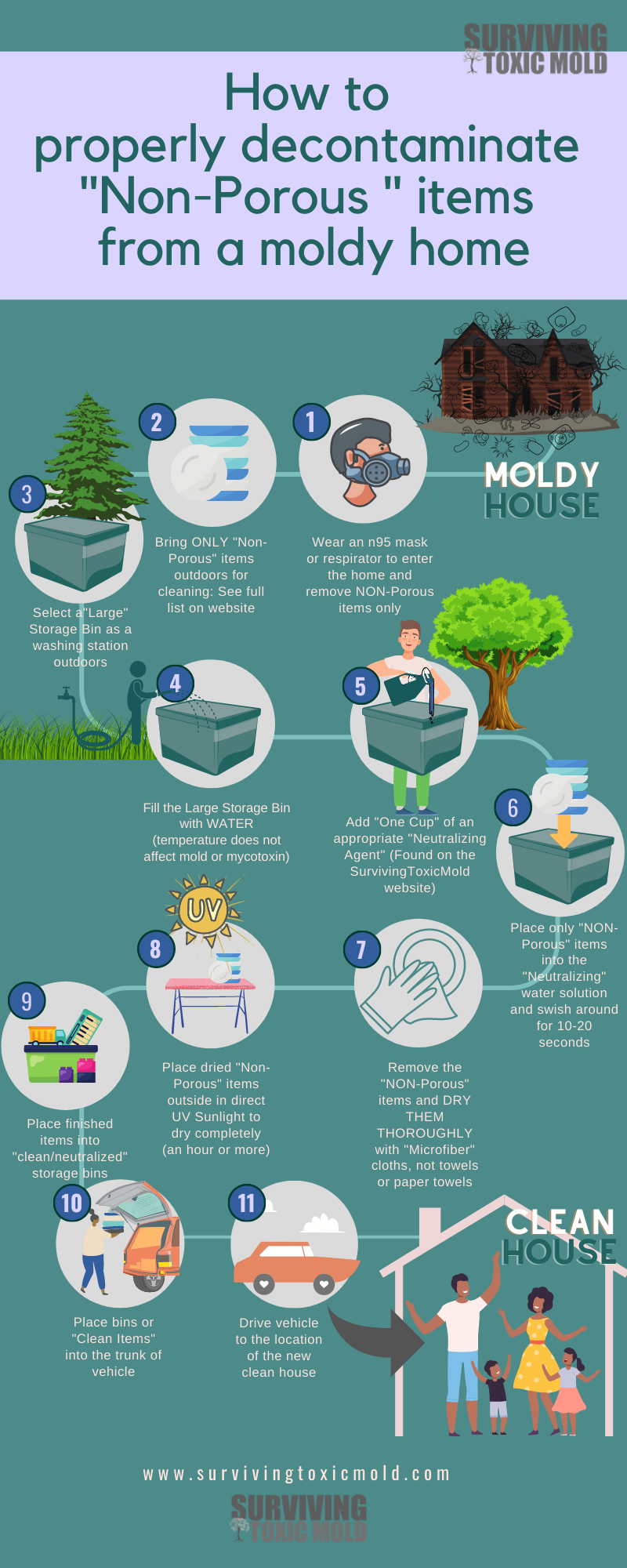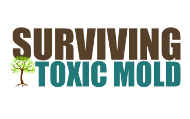Toxic mold cross contamination is a serious issue that can have harmful effects on your health. It occurs when mold spores from one contaminated area or "object" spread to another location or area of your home or workplace.
These "invisible to the naked eye" spores can cling to paper products, wood, clothing and fabrics, furniture, shoes, pets, and other objects, allowing the mold to propagate in new locations. Even just a few spores can begin growing into full-fledged colonies if the conditions are right. Below, you will see a picture of the right "conditions" that can cause just a few cross-contaminated items to start growing mold and producing large growth areas from a few inches to massive mold issues.

Some of the most hazardous molds produce mycotoxins, poisonous by product substances that can cause respiratory issues, neurological problems, hormonal imbalances, organ failures and a suppressed immune system when inhaled or absorbed onto the skin.
Cross contamination of mold can happen in a few different ways:
- First, mold spores can spread easily through the air, so open containers of moldy food, possessions, fabrics or materials that have been exposed to water damage in the past and are now dried out in one area can release spores that land on surfaces and start new mold growth elsewhere.
- Second, touching moldy items and then touching other surfaces can transfer mold via hands or objects.
- Third, moving possessions, furniture, fabrics and items from a space that contain excessive amounts of mold (found in air tests and ERMI dust cloth tests or Swab tests performed by mold inspectors) to other rooms, other locations, vehicles, moving trucks, storage facilities or other homes or offices.
- Fourth, using the same tools, rags, buckets etc. when cleaning both moldy and non-moldy areas risks spreading spores to uncontaminated areas.
The key to avoid cross contamination is to completely isolate moldy items, contain or dispose of them properly, and use good cleaning and containment practices. Wear gloves and wash hands after handling mold. Use separate labeled tools just for mold remediation. Seal off moldy rooms from the rest of the home. These types of precautions can help stop mold growth from spreading where it's not wanted.
1. Use our "Saving Your Possessions" guide to dispose of items THAT CAN NEVER BE SAVED.
2. Use our "Laundry Protocol" to safely clean fabrics exposed to mold
3. Follow the proper protocol of cleaning, neutralizing and transferring items to new clean spaces by following the visual chart below:

Properly remediating a space is vital to preventing cross contamination
That's why it's so important to hire professionals who are trained in containing toxic mold properly and prevent it from infiltrating areas of your home that were previously mold-free. Cross contamination allows the mold to gain a foothold in multiple sites, increasing your exposure to these deadly spores and the chemical byproduct of mycotoxin that is so very dangerous.
Proper remediation techniques involve sealing off affected rooms with remediation grade plastic chambers and using these containment chambers along with heavy-duty equipment air scrubbers when removing moldy materials. Thoroughly and "properly" cleaning any exposed items that could carry spores elsewhere is REQUIRED.
Protect yourself and your family by learning how to identify signs of contamination and stop it from spreading. With vigilance and care, you can halt toxic mold in its tracks.





